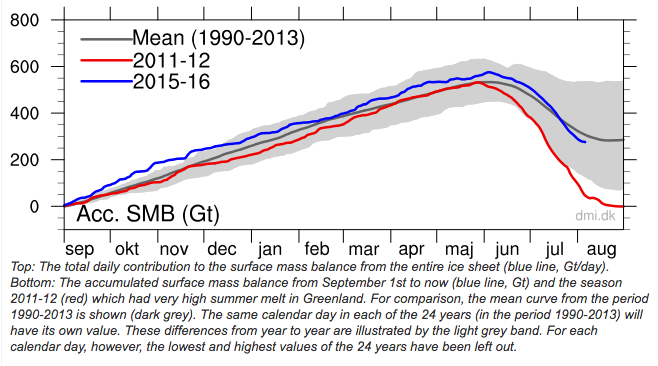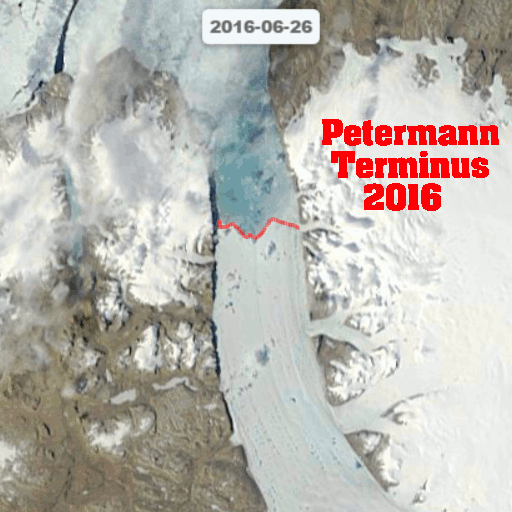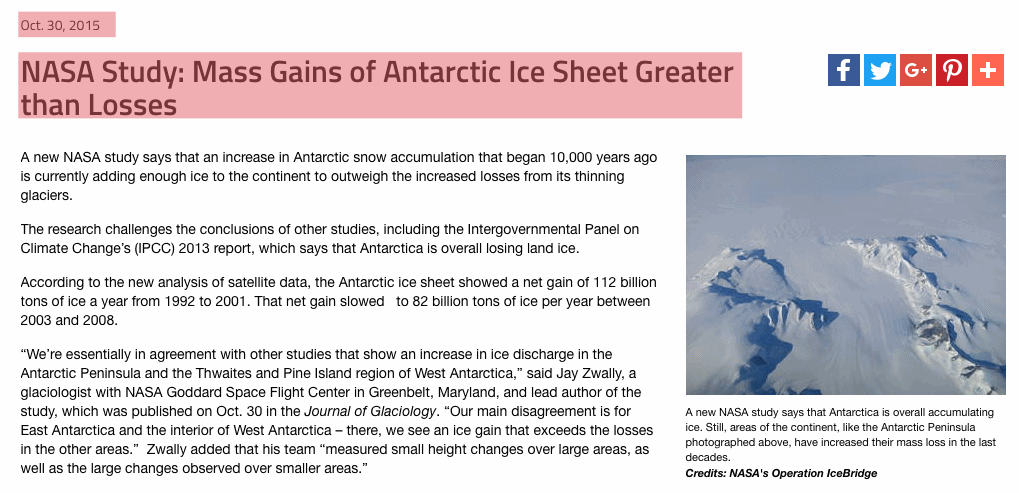Greenland’s surface receives twice as much snow as what melts every year.
 Greenland Ice Sheet Surface Mass Budget: DMI
Greenland Ice Sheet Surface Mass Budget: DMI
If you show them the graph, alarmists will indignantly respond with this comment from the same document.
satellites measuring the ice sheet mass have observed a loss of around 200 Gt/year over the last decade.
The claim is that glacial calving is causing a net loss of ice, that is based on some decade old junk science interpretations of satellite data – which have been known to be bogus for six years. The geniuses who made that study didn’t take into consideration that the land is moving due to glacial rebound.
September 2, 2010 by M & C
The melting of the ice sheets of Greenland and West Antarctica is about twice as slow as previously thought. The study, conducted by TU Delft, SRON and the Jet Propulsion Laboratory. The scientists published their findings in the September issue of Nature Geoscience.
The melting of ice sheets since 2002 is mapped with measurements of the two GRACE satellites.These detect from space small changes in the gravitational field of the earth.These changes are related to the exact distribution of mass on Earth, including ice and water.As ice melts and sea, is this influence in the gravity field.
Based on this principle were previous estimates for the Greenland ice sheet at 230 gigatons of ice that melts each year (that’s 230,000 billion pounds). This results then in an average global sea level rise of about 0.75 mm per year. For West Antarctica was the estimated 132 gigatons each year. With these results, it now appears, however, were not corrected for glacial Isostatic adjustment, the phenomenon that the earth’s crust continues to soar due to the melting of large ice sheets of the last Ice Age, about 20,000 years ago. These movements of the crust should you take in the calculations for these vertical motions change the mass distribution of the earth and so they also affect the gravity field.
TU Delft – Melting rate icecaps Greenland and Western Antarctica lower than expected
Greenland has cooled sharply over the past six years, and satellite imagery shows that many glaciers in Greenland have actually been growing since 2013.
Alarmists will cling tooth and nail to ten year old junk satellite interpretations, but if you show alarmists NASA’s most recent research indicating that Antarctica gaining ice, they invariably respond with something like “satellite data is inaccurate and not reliable – contradicts earlier studies ”
NASA Study: Mass Gains of Antarctic Ice Sheet Greater than Losses | NASA
Debating climate alarmists is like playing chess with a pigeon. They knock the pieces over, crap on the board, and then strut victoriously.




